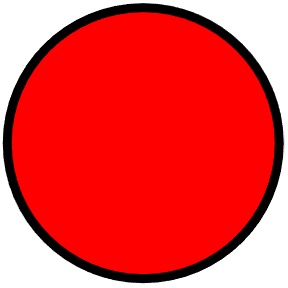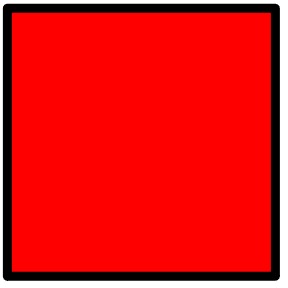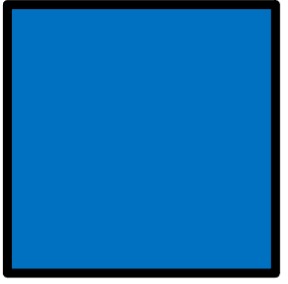Subsection 2.2.2 A Truth Table Definition of the Operator and
We’ll begin with the operator and. We’ll define it using a truth table. You’ll see that our definition corresponds to your everyday intuition about what and means.
In the rest of this discussion, we’ll use the symbol \(\wedge \) to mean and. Thus, \(p \wedge q \) is read “p and q”. The symbol & is also sometimes used to mean and.
By the way, you can remember this notation by noticing that the symbol for AND looks like a capital letter A that is simply missing its center bar:
AND
Here is the truth table for the and operator:
| \(\text {p} \) | \(\text {q} \) | \(\text {p} \wedge \text {q}\) |
|---|---|---|
| T | T | T |
| T | F | F |
| F | T | F |
| F | F | F |
We can read the first (non-title) line as, “When p is true and q is true, then p \(\wedge\) q is true”. Look at the entire table and notice that the only situation in which p \(\wedge \) q is true is when both p is true and q is true. Notice, also, that the four lines in the table provide a definition for every possible combination of the truth values of p and q.
We’ll call a statement that is formed by and-ing together other statements a conjunction.
Some examples of simple conjunctions are
\(\displaystyle p \wedge q \)
\(\displaystyle p \wedge (q \wedge r) \)
English Aside
Consider the following English sentences:
“Jim is tall and Joe is short.”
“Jim is tall but Joe is short.”
“Jim is tall yet Joe is short.”
“Jim is tall, however Joe is short.”
“Even though Jim is tall, Joe is short.”
They all mean the same thing at the level of their literal propositional content. Given any actual state of affairs (in this case, the heights of Jim and Joe), either all of these sentences are true or none of them is. So, for the analysis that we will be doing, the English words (phrases) “and”, “but”, “yet”, and “even though …” all correspond to the logical operator we are calling and.
Of course, there is a reason that English gives us these alternatives. They allow us to convey different additional kinds of information. For example, we use “but” to suggest that the second proposition is perhaps unexpected. We will not try to encode that extra information in the examples that we’ll be considering.
Exercises Exercises
Exercise Group.
Recall the truth table for and that we just presented:
| \(\text {p} \) | \(\text {q} \) | \(\text {p} \wedge \text {q}\) |
|---|---|---|
| T | T | T |
| T | F | F |
| F | T | F |
| F | F | F |
Let p correspond to the claim, “The circle is red.”
Let q correspond to the claim, “The square is blue.”
Consider the claim, “The circle is red and the square is blue.”
1.
(Part 1) Consider this situation:


Which row of the and truth table tells us whether our claim is true?
Line 1 and the claim is true.
Line 2 and the claim is false.
Line 3 and the claim is false.
Line 4 and the claim is false.
2.
(Part 2) Consider this situation:


Which row of the and truth table tells us whether our claim is true?
Line 1 and the claim is true.
Line 2 and the claim is false.
Line 3 and the claim is false.
Line 4 and the claim is false.
2.
Let p correspond to the claim: One terabyte equals approximately 106 megabytes.
Let q correspond to the claim:
In 1950, the biggest computer in the world had less than a megabyte of memory.
Consider the claim: \(p \wedge q\)
Which row of the and truth table tells us whether our claim is true? (Hint: Go look up the facts.)
Line 1 and the claim is true.
Line 2 and the claim is false.
Line 3 and the claim is false.
Line 4 and the claim is false.
